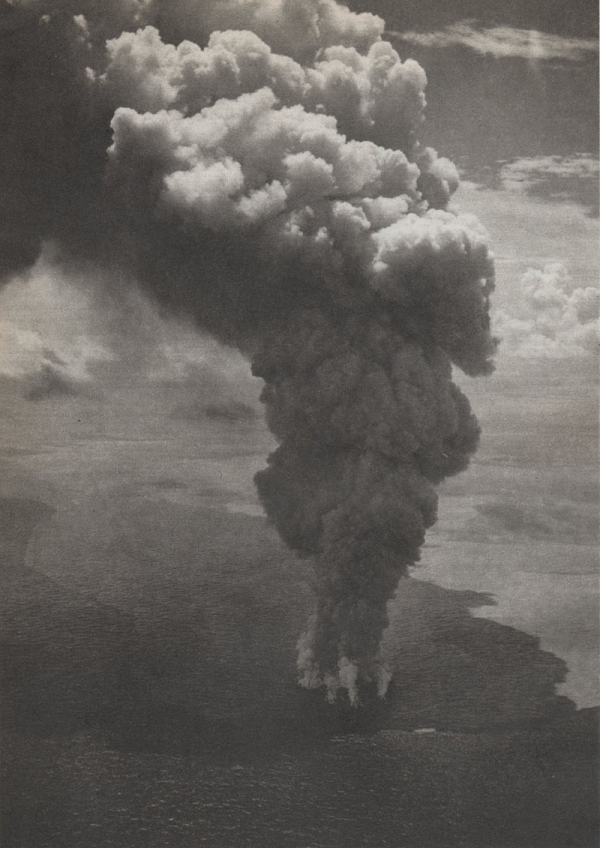Innovative experiments being run at the University of Auckland are giving natural hazard researchers and PhD students from NIWA, GNS Science and the Universities of Auckland and Otago a close look at how erupting volcanoes can cause deadly and damaging tsunamis.
Funded with a Marsden grant from the Royal Society, the project is focusing on the wave generating capacity of large explosive eruptions and pyroclastic density currents – hot mixtures of particles and gas which form during eruptions and flow down the sides of volcanoes.
Compressed air, gas and steam are being used in water tanks to simulate the waves generated when underwater volcanoes blow their top. A network of sensors and video cameras have been capturing the action in slow motion at a range of pressures and tank depths.
Christchurch-based NIWA hydrodynamics scientist Emily Lane says some underwater volcanic eruptions happen in such deep water that the surface is barely affected. Others happen in shallower water with the bulk of explosive activity above the surface. The project team is investigating the “sweet spot” between these two extremes where the depth of the water and strength of the eruption can generate large damaging waves.
The project has also seen glass beads tipped down aerated ramps into water to mimic what happens when pyroclastic flows hurtle down the sides of erupting volcanoes. Equations named after 18th Century French physicist Claude-Louis Navier and Anglo-Irish mathematician George Gabriel Stokes are being used to model how these flows move. Numerical models the project team are putting together are being crunched by NIWA’s high performance supercomputer.


Emily says while we don’t have strong evidence of volcanic tsunamis in New Zealand, there are lots of places with all the right ingredients – Lake Taupo, White and Mayor Islands, offshore parts of the Auckland volcanic field and the geologically restless Kermadec Arc, for example.
“Taupo caldera, Auckland volcanic field and offshore Bay of Plenty are places where we’re missing information about tsunami hazard from eruptions. It’s a possibility in those locations, so we’re working to find out how much of an issue it may be.”
Big underwater shakes are responsible for most of the tsunamis that reach New Zealand shores. While our tsunami hazard planning focuses mostly on earthquake-generated tsunamis, large waves generated from volcanic activity do happen. They can be every bit as destructive. We know this from overseas events.
Well-documented cases include the 1883 Krakatoa eruption (see lithograph right (top)), which generated multiple large tsunamis that killed over 36,000 people, Monserrat volcano in the Caribbean, Rabaul in Papua New Guinea and Myojin-sho in Japan (image right, bottom). More recently, a 1996 eruption near the northern shore of Russia’s Lake Karymskoye created waves up to 30 metres high, and over 400 people died in a tsunami when the flank of Indonesia’s Anak Krakatoa collapsed in 2018.
“We’re combining our knowledge of what has happened in different places around the world with these lab experiments and numerical models to understand the most dangerous conditions in tsunamis generated by underwater volcanic eruptions and the nature of the volcanic tsunami hazard here in New Zealand. That will help us better prepare for possible future volcanic tsunamis,” says Emily.
To find out more, see the abstracts of two published papers on the project’s experimental lab work:
- Laboratory Experiments on Tsunamigenic Discrete Subaqueous Volcanic Eruptions. Part 1: Free Surface Disturbances
- Laboratory Experiments on Tsunamigenic Discrete Subaqueous Volcanic Eruptions. Part 2: Properties of Generated Waves
The following video shows glass beads being tipped down aerated ramps into water to mimic what happens when pyroclastic flows hurtle down the sides of erupting volcanoes:
The next video shows an experiment simulating an underwater volcano explosion in a water tank:
